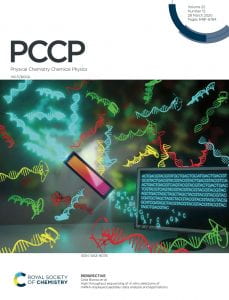It is tempting to imagine that, during the origin of life, the earliest catalytic RNAs would be so simple that they would be rather non-specific in activity or substrates. Then, evolution might create variants that would become optimized for different activities through natural selection. But would early, ‘simple’ ribozymes actually be more promiscuous than more evolved systems? Led by graduate student Evan Janzen, we review the literature on this question and suggest that there is little evidence that newly evolved ribozymes would be unusually promiscuous. Like most features, promiscuity itself is evolvable.
On the practical side, high-throughput sequencing has revolutionized the analysis of many problems, including in vitro evolution. Last year, in a review led by postdoctoral fellow Celia Blanco, we described the impact that HTS has had on the ability to experimentally map molecular fitness landscapes. This year, Dr. Blanco presents a perspective article on the use of HTS in selections of functional peptides by mRNA display. Special thanks to collaborator and mRNA display guru Burckhard Seelig for his expertise. Graphic artist Brian Long created the cover art. The editors called this a ‘HOT’ paper – keep a glass of milk handy!
Janzen E, Blanco C, Peng H, Kenchel J, Chen IA. Promiscuous ribozymes and their proposed role in prebiotic evolution. Chem. Rev.
Blanco C, Verbanic S, Seelig B, Chen IA. High-throughput sequencing of in vitro selections of mRNA-displayed peptides: data analysis and applications. Phys. Chem. Chem. Phys. 22: 6492-6506.
Blanco C, Janzen E, Pressman A, Saha R, Chen IA. Molecular fitness landscapes from high coverage sequence profiling. Ann. Rev. Biophys. 48:1-18

